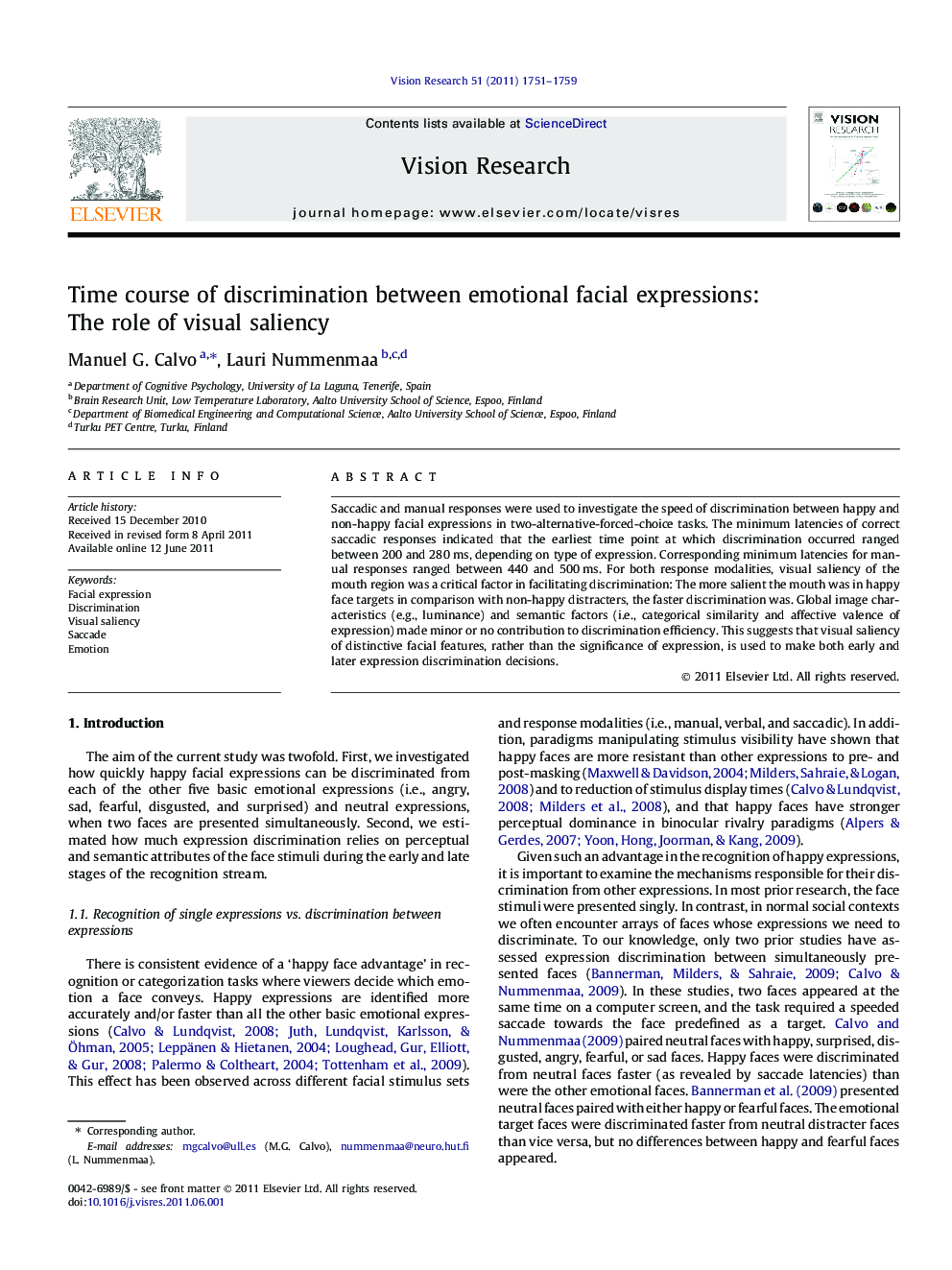| Article ID | Journal | Published Year | Pages | File Type |
|---|---|---|---|---|
| 4034296 | Vision Research | 2011 | 9 Pages |
Saccadic and manual responses were used to investigate the speed of discrimination between happy and non-happy facial expressions in two-alternative-forced-choice tasks. The minimum latencies of correct saccadic responses indicated that the earliest time point at which discrimination occurred ranged between 200 and 280 ms, depending on type of expression. Corresponding minimum latencies for manual responses ranged between 440 and 500 ms. For both response modalities, visual saliency of the mouth region was a critical factor in facilitating discrimination: The more salient the mouth was in happy face targets in comparison with non-happy distracters, the faster discrimination was. Global image characteristics (e.g., luminance) and semantic factors (i.e., categorical similarity and affective valence of expression) made minor or no contribution to discrimination efficiency. This suggests that visual saliency of distinctive facial features, rather than the significance of expression, is used to make both early and later expression discrimination decisions.
► Saccade and manual responses showed early and late facial expression discrimination. ► Discrimination between expressions started 200 ms from stimulus onset. ► Visual saliency of the mouth region made a major contribution to discrimination. ► Significance of expression had little effect on both early and late discrimination. ► Saliency of a distinctive face region supports retrieval of expression significance.
